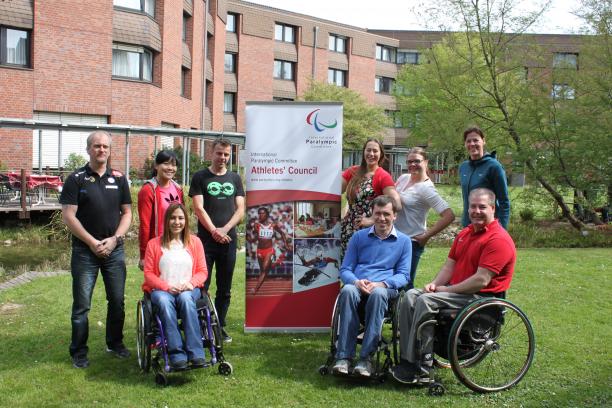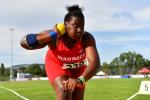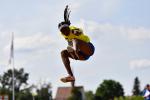Para sport explained: What does the IPC Athletes’ Council do?
27.05.2016The Council is comprised of 10 members who ensure that Para athletes’ voices are considered in IPC decision-making and the greater Paralympic Movement.
 IPC Athletes' Council
© • IPC
IPC Athletes' Council
© • IPC
Anti-doping process, classification review and, yes, even retirement plans — these are just a few examples where the IPC Athletes’ Council ensures that athletes have a strong voice in the Paralympic Movement.
Currently comprised of 10 active Para athletes, the Council does just that in making sure the athletes’ inputs, opinions and feedbacks are considered when decisions are being made by the International Paralympic Committee (IPC).
But how exactly does that work?
Hearing from the athletes
Former Canadian ice sledge hockey player Todd Nicholson Chairs the Athletes’ Council and has been a member since 2010. He said before there was no formal way for the athletes’ voices to be heard.
“Collectively, we try to bring the voice of the athlete concerns to the IPC Governing Board and the decision makers,” Nicholson said. “With all that being said, with us as the Athletes’ Council, we had difficulties accessing the athletes with any questions, concerns or hearing their voices.”
Thus, the Council created the Para Athlete Facebook Group and athletescouncil@paralympic.org, where athletes can express their views, put forth ideas and get involved.
The Facebook group was created to address that issue, but there is plenty of room for improvement.
“What can we do more of? The exact same thing,” Nicholson said. “We need to create better structures for our athletes’ voice to come forward and for more athletes to be aware of how to come forward.
“To stretch on that, I think we need to do a better job of communication in terms of relaying changes and regulations, and explain to the athletes the reasoning behind some of those changes.”
Nicholson said most questions, concerns or feedback they receive are sport-specific.
Thus, each member on the Athletes’ Council (six summer athletes and four winter athletes) is responsible for a certain number of sports. The respective member then communicates with the athlete regarding the matter, which usually can be re-directed back to the respective International Federation (IF).
With that in mind, the idea of creating “Athlete Focus Groups” within sports came up. (More on the Athlete Focus Groups is discussed later in this article).
Reaching the decision-makers
While most of the feedback the Council receives are sport-specific, Nicholson recalled a concern regarding anti-doping testing process that reached a higher level, and the Athletes’ Council brought it to the attention of the IPC Medical and Scientific Department.
“You have an athlete who doesn’t have arms. When it came to the testing process, it’s nipples to knees. So you need to be exposed in that area before you go to the bathroom, when you’re providing your sample in front of the individual. The individuals who don’t have arms, they have the capability to do things to go to the bathroom. And they can do that individually. When it came to the testing process, they needed someone to hold the cup for them while they went to the bathroom. You can just imagine how degrading that is and how that would make somebody feel,” Nicholson said.
“It was brought to our attention, and we approached the World Anti-Doping Agency through the [IPC Medical and Scientific Department].”
A solution was found, in which a sterile collection tool would be put it in the toilet and collect the athletes’ sample.
With the Council being a compilation of active Para athletes, they also provide feedback on certain IPC procedures.
“With classification, [the IPC] recently had a review process and were making changes and improvements for the new 2017 Classification Code. The Athletes’ Council and a number of other representatives were provided an opportunity to provide input. This was a really good process because we received time to review the plans they had,” said Elvira Stinissen, Vice Chairperson of the Athletes’ Council.
The Athletes’ Council had three opportunities to give feedback on the proposed changes to the Code. Other athletes through the IPC membership were also provided the opportunity to have a say and help promote the athletes’ voice and concerns within the new Code.
Stinissen emphasised the importance for the Council to have more options like this.
“Sometimes we also get to see the plans when they are done, so there is not a lot of room for discussion. So maybe in the process of planning, I think it is important that we have more options as an Athletes’ Council to provide input,” Stinissen said.
Athletes as the decision makers
As captain of the Dutch women’s sitting volleyball that took bronze in Beijing 2008, Stinissen said she felt disconnected from policy makers when she was solely an athlete.
But being on the Athletes’ Council, and also working 32-hours a week at the Netherlands’ Ministry of Sport, Well-Being and Health as a policy officer, has broadened her understanding.
“It gives me a different perspective on what policy makers are dealing with when they are talking about sport, because when I was only an athlete, the policy makers were very far from me,” Stinissen said.
“[I work in] a sport department, so [my colleagues] really like sport and know about sport. But it is really different. So for them, it is really useful … that there is another athlete in their work and I can give them an athlete perspective because for them, it can be really hard to understand what an athletes’ life is and what he or she has to be doing.”
The IPC Governing Board is comprised of 15 members and responsible for setting policies and ensuring that the directions set by the General Assembly are implemented.
There is a unique case in which Nicholson is among those 15 members, giving Para athletes a direct voice on the Board. He also noted that a number of the Board members are retired Para athletes, adding more athlete perspective to the table.
Having athletes among decision-makers is one way of ensuring athletes’ voices are heard. Placing athletes at the heart of Paralympic Movement also helps create advocates who can inspire and support other athletes in all areas of their careers and after they retire. This is done through the IPC’s education programme Proud Paralympian, which brings together all athlete-related areas within the Movement and encourages athletes to know, live and share their lives, rights and roles. The IPC Athletes’ Council is a key part of Proud Paralympian.
Language barrier
As the only Asian member on the Athletes Council, wheelchair fencer Yu Chui Yee said the language barrier is the most difficult part for Asian athletes to voice their opinions.
Part of what hinders them from doing so is because of the lack of awareness of athletes’ rights and responsibilities in some parts of Asia.
A solution, she proposed, is to develop more outreach programmes in different regions in order to get in touch with more athletes and hear their voices.
“I believe sport has no boundaries and it should be for all,” Yee said. “However, with cultural differences and lifestyles, different practices have to be used in order to promote the sport and also the hear the issues. Sometimes, language may be an obstacle for Asian athletes to get involved in sport issues.”
“Therefore, [as an IPC Athlete Council member], I can act as a channel for the Asian athletes to voice their opinions. Moreover, I hope to see more Asian athletes interested in being one of the Athletes’ Council members and participate in the election in the future.”
On the Council’s agenda
Another common concern raised by athletes has been what they do when they retire and is a topic the Athletes’ Council has called for the IPC to develop.
As part of the Proud Paralympian, the IPC has been working with Adecco to provide work opportunities for Para athletes while they compete and develop skills to utilise after their athletics careers.
Additionally, since many of an athlete’s concerns are sport-specific, the Council has worked to set up “Athlete Focus Groups” within each Paralympic sport – starting with IPC-governed sports. The goal is to create a better structure for the athletes’ voices within their sports and allow the athletes to liaise effectively with their International Federation (IF). The groups would keep their IF and Sport Technical Committee regularly informed of athletes’ opinions, among other objectives.
“One of the things we’ve been able to accomplish in the last seven years is to raise the level of authority that the athlete has in the decision-making process,” Nicholson said.
“Now we’re trying to create structures within sports [through Athlete Focus Groups] to ensure that athletes are taken into consideration when decisions are being made, and that the athletes are at the decision making table.”
More information on the Athletes’ Council is available on the IPC website.
Editor’s note: Para sport explained is a feature series on Paralympic.org that will publish once a month, helping the public understand different aspects of the Paralympic Movement.



















